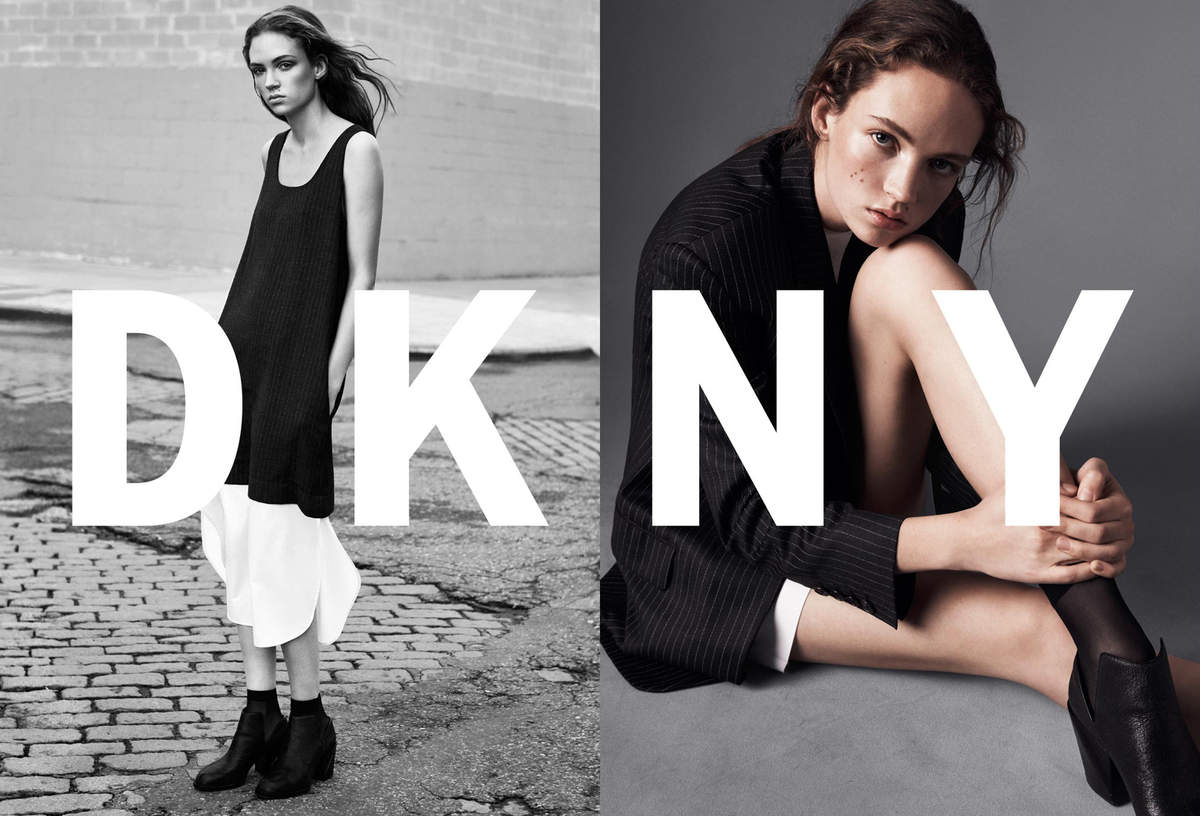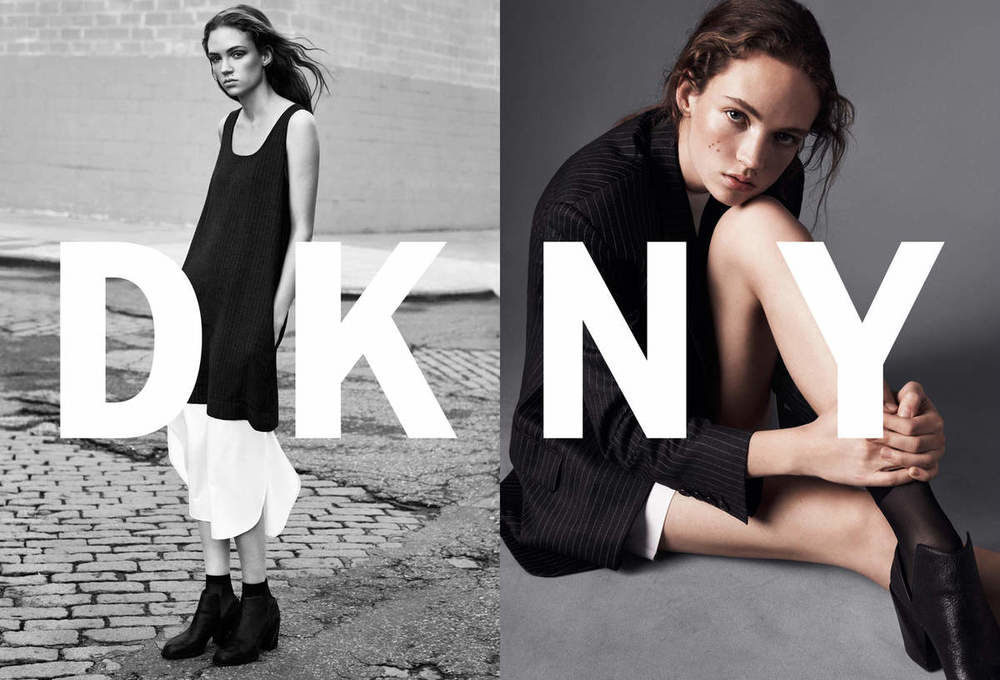Erase and Rewind
The flexibility of digital content has opened up the possibilities of ongoing editing, and for some brands this means the opportunity for a fresh start. But is that all it takes to rebrand?

Radiohead wiped out its entire online presence only to debut a new single a couple of days later. DKNY erased both its Instagram and Twitter history as the fashion house headed into a new creative direction. In the wake of Hedi Slimane’s departure, Yves Saint Laurent deleted all posts from its Instagram account save for one photo of incoming creative director Anthony Vaccarello.
Because the flexibility of digital content allows for ongoing editing, brands of all stripes – spanning from musicians to fashion labels – are increasingly using their online presences to reflect big changes and reinvention by wiping the slate clean. It’s not surprising, though, considering that tech savvy customers are becoming more reliant on a company’s website and social media channels as credible sources of information. But are there potential pitfalls for making such a drastic move, or does it actually work when ushering in a new era for a brand?
In this day and age, a brand’s online presence is equally important as – and in some cases even more so than – its offline one, argues Marta Sundac, senior editor at Highsnobiety, a fashion and culture news website. “One of the biggest advantages that online material offers is that it can be fleeting – gone are the days where once something is printed it’s there forever,” she said, “Brands now have the ability to offer behind-the-scenes coverage, tease campaigns and drops, without the need for a long turnaround time. It’s the informality that has allowed brands to connect with consumers in entirely new ways.”
Nowadays, a well-implemented online strategy can help a brand build a sense of community, ensure customer satisfaction and create a sense of loyalty. However, while erasing online histories may be a tactic for brands to remove dead weight and focus on the future, it could also have repercussions, including confusing social media followers, provoking negative responses from consumers and diminishing a company’s brand equity.
In addition to authentically representing a brand’s values, aesthetic and style in real life, companies should consider translating these aspects into the online realm. Why? Because not having an online presence means a brand risks losing out on a significant slice of the audience – especially when it comes to social media channels. A 2015 poll by GlobalWebIndex showed that 28% of online activity is spent on social networks, a figure that's surely only increased.
Radiohead

Known for their unconventional approaches to releasing new music, Radiohead fueled anticipation for a potential upcoming album by wiping out its online identity in May. The affair began on May 1st when the iconic band’s website as well as posts on Facebook, Twitter and Google+ began slowly disappearing to null. Once fans caught on, the Internet was alight with rumours flying about the possible unveiling of a ninth studio album. Days later, Radiohead released a new single, “Burn the Witch”, alongside an eerie video.
For a band of Radiohead’s stature, erasing their online presence undoubtedly got people talking – but it's unlikely to work the same way for a lesser-known artist, said Catherine Moore, a clinical associate professor of music business at New York University. “It’s almost predictable that Radiohead will be unpredictable in their actions. They have that kind of reputation,” she explained, “So when they took down their online presence, that was something that got them media, fan and public attention. It's something that works for Radiohead.”
If a smaller musical act with less brand awareness made the same move, not only would fewer people notice, it's likely it would be interpreted entirely differently. “People might just think the band broke up or stopped what they were doing and that would be the end of it. No one would pay any attention,” Moore added.
In our current technological landscape, it’d be very surprising to fans if a musician or band did not have an online presence. Having a distinctive and consistent online identity that complements the offline presence is now something that performers need to think about in order to stand out and reinforce their brand.
“When an artist starts out and they're not thinking about how they're going to present themselves online, that's a mistake,” explained Moore, “If they start by putting things out that are of low-quality or disorganised without a thread to stitch it all together, it'll be very, very hard for them to build a reputation, online audience and social metrics – which like it or not – other professionals in the business look at when looking to support and invest in an artist.”
DKNY

It’s undeniable that the fashion industry is moving at a breakneck pace and now it seems the turnover rate of creative directors at brands is catching up. To mirror these changes, fashion houses are increasingly using their social media accounts as a tool for rebranding and indicating a fresh start.
In August 2015, every tweet posted on the DKNY Twitter page since 2009 was scrubbed away. Then, all photos on the brand’s Instagram account were also wiped out. The drastic moves followed the announcement that the brand’s founder, Donna Karan, was leaving as chief designer and DKNY’s SVP of Communications Aliza Licht had departed from her role.
In terms of consumers, it's definitely a bit of a loss, like closing a store in a way. But I think after that initial moment, people get excited and they think, 'What's coming next?’ and ‘We can't wait to see it. Gretchen Harnick, Pattern to Plan
In recent years, social media “voices” at DKNY, Oscar de la Renta and Bergdorf Goodman, which provided a behind-the-scenes look into the fashion industry and a more personal touch to fashion labels, helped to humanise the brand and make it more approachable to consumers. Although it’s understandable why the team took such a severe approach to usher in a new creative direction, the move was inevitably a sad surprise to fans who had grown attached to the DKNY PR Girl.
“It's quite a shock, absolutely, and people really hold on tight to what they've been accustomed too,” said Gretchen Harnick, fashion business strategist and founder of Pattern to Plan, a global online fashion incubator, “In terms of consumers, it's definitely a bit of a loss, like closing a store in a way. But I think after that initial moment, people get excited and they think, 'What's coming next?’ and ‘We can't wait to see it.”
“Personally, I think it's okay to clean house, especially when there's a new strategy,” she added.
When thinking of fashion brands that do a good job of developing an online presence that accurately reflects their offline selves, Harnick said San Francisco-based fashion startup Everlane comes to mind. “They’re all about transparency – in the way they communicate and in the stories they tell about the manufacturing process,” she said, “They’re very clear about their values.”
The American clothing label don't use social media to sell their products but instead to demonstrate their commitment to transparency, posting the actual costs behind making a T-shirt and even using Snapchat "Stories" to give a tour of their factories in China.
Yves Saint Laurent

After it was announced in April this year that Anthony Vaccarello would be replacing Hedi Slimane at Yves Saint Laurent, the French fashion house took the liberty of erasing all traces of the Slimane era on Instagram. The only thing left on the account after the purge was a black and white portrait of the new successor. Similar to what happened at DKNY, the erasure resulted in mixed reactions in the social media sphere.
“Saint Laurent's move indicated something more drastic, as if it was a last-ditch effort to breathe new life into the house - which, as I understand, didn't seem necessary,” said Maura Brannigan, senior editor at Fashionista.com, “It seemed to alienate some of Hedi's more hardcore fans, too. I saw a lot of ‘If it ain't broke, don't fix it!’-type comments on that one remaining Instagram post and via Fashionista's social media, as well.”
It's important to rebrand in the ways the company sees fit, and if that means cleaning house on its social media platforms, so be it. But there can be a lot of history embedded into those profiles Maura Brannigan, Fashionista.com
But is this kind of social media restarting actually an effective way for a fashion house to reinvent itself? Or is it ultimately more detrimental to its brand equity? Brannigan thinks that it can be a very fine line. “It's important to rebrand in the ways the company sees fit, and if that means cleaning house on its social media platforms, so be it. But there can be a lot of history embedded into those profiles, as well, especially with a house as legacy-based as Saint Laurent,” she added.
One thing is for certain, though, the rise of online platforms – such as Instagram and Twitter – in the fashion realm has offered exciting ways for labels to connect with new audiences and stay relevant in the ever-changing digital climate.
“Fashion houses are learning how to utilise social media to further express their brand in ways they likely couldn't have dreamed of even five years ago. Take Olivier Rousteing or Riccardo Tisci, both of whom have skyrocketed their respective labels' brand identity through the magic of Instagram,” said Brannigan, “We're able to learn more about fashion than ever before, and it's the brands' responsibility to jump into that channel to reach the consumer.”


